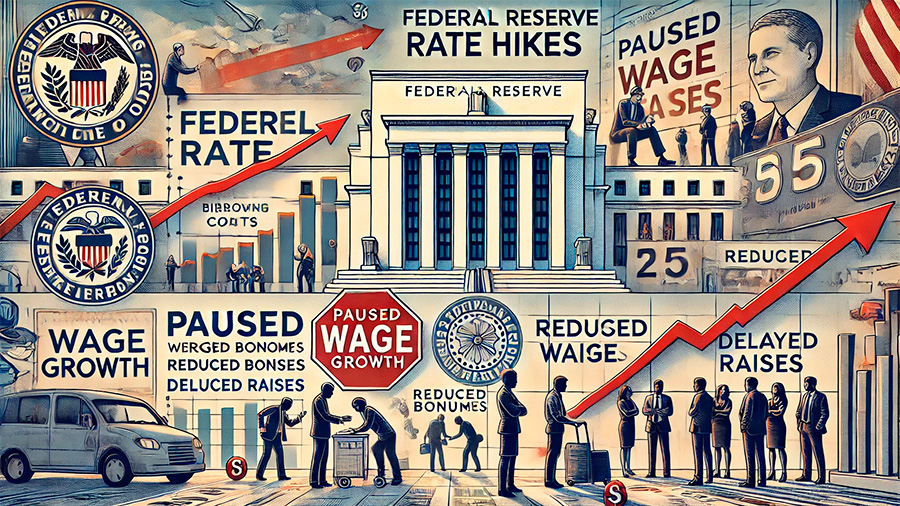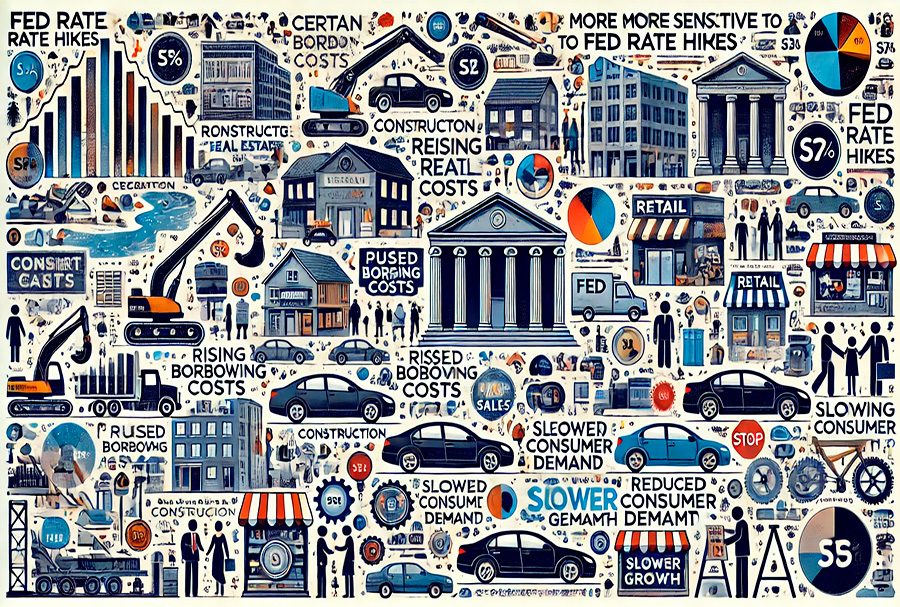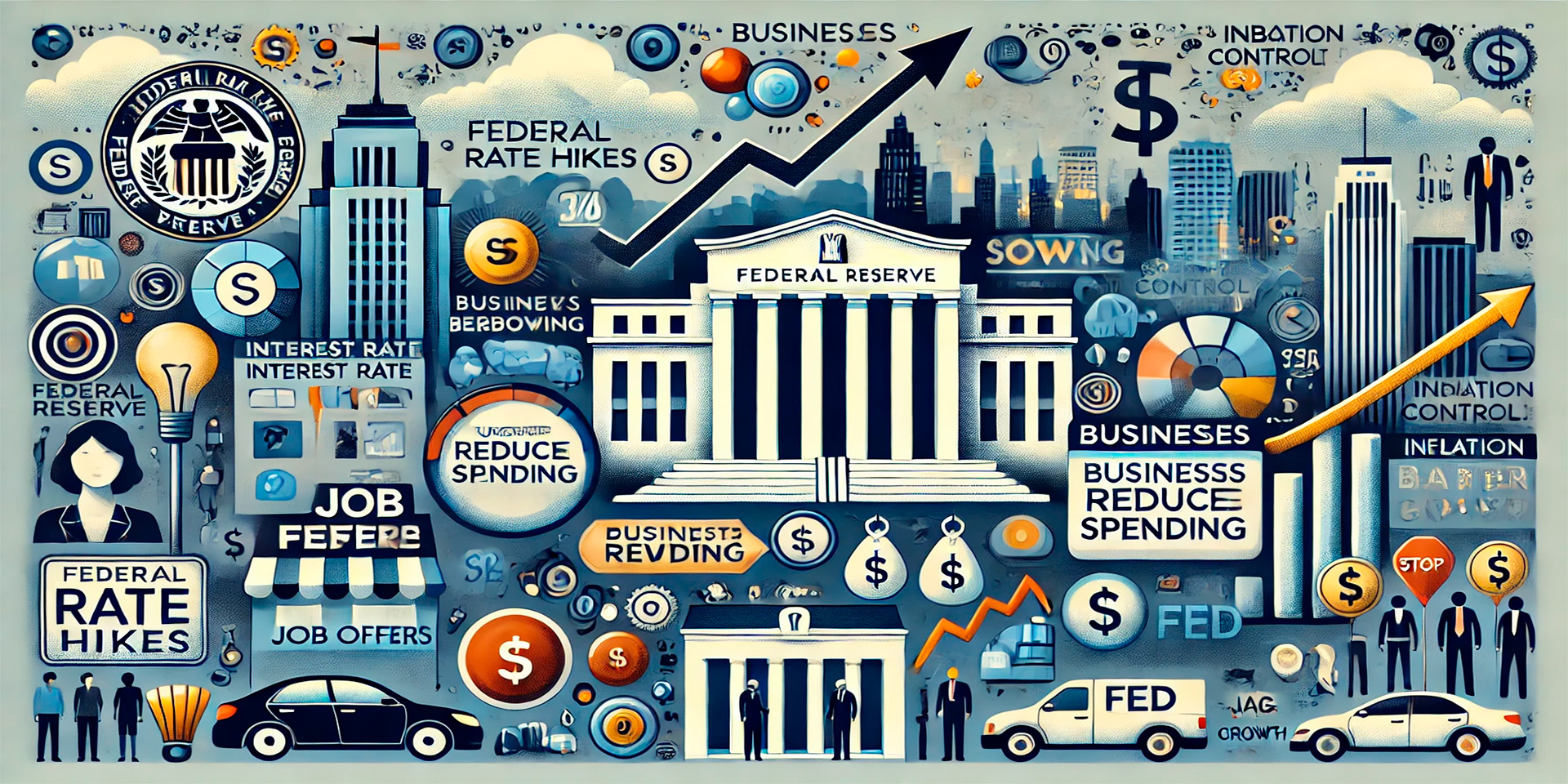The Federal Reserve (Fed) plays a critical role in shaping U.S. economic policy, particularly through its control of interest rates. When the Fed raises rates, it becomes more expensive to borrow money, which can slow economic activity. The primary goal of these rate hikes is to control inflation, but they also have significant consequences for employment and wages. As the cost of borrowing rises, businesses may reduce their spending, which can directly affect hiring and wage growth. Understanding how Fed rate hikes ripple through the labor market is crucial for grasping their broader impact on jobs and wages.
Why the Fed Raises Interest Rates
- Inflation control: The Fed raises rates to curb inflation, which occurs when prices for goods and services rise too quickly, reducing the purchasing power of consumers.
- Economic cooling: By increasing borrowing costs, the Fed aims to slow down economic activity, reducing demand and tempering inflationary pressures.
- Balancing growth: The Fed seeks to strike a balance between fostering economic growth and maintaining stable prices, and rate hikes are a tool used to achieve this balance.
When the Fed hikes interest rates, the effects are felt across various sectors, including labor markets, as businesses adjust to the higher costs of borrowing.
How Fed Rate Hikes Affect Employment
When the Fed raises interest rates, it generally slows the overall economy. This slowdown can lead to reduced business activity, which directly impacts employment. Companies may scale back expansion plans, delay hiring, or even lay off workers as their borrowing costs increase and consumer demand weakens. These actions can lead to a rise in unemployment and slower job creation, especially in sectors that are sensitive to interest rate changes.
Impact on Job Growth
- Reduced hiring: Businesses may cut back on hiring new workers to manage increased borrowing costs, leading to fewer job openings.
- Hiring freezes: Some companies may implement hiring freezes during periods of economic uncertainty to control expenses.
- Job losses in rate-sensitive industries: Sectors like real estate, construction, and automotive, which are heavily dependent on credit and financing, are often the first to experience job cuts as higher rates reduce demand.
Rate hikes often lead to slower job growth, especially in industries that rely on borrowing or are closely tied to consumer spending patterns.
Unemployment Risks
- Layoffs in affected sectors: Rate hikes can cause businesses in sectors like housing and retail to downsize, leading to increased layoffs.
- Slower rehiring post-layoffs: Businesses may take longer to rehire laid-off workers, further prolonging unemployment in certain areas.
Though the Fed’s goal is to prevent the economy from overheating, higher interest rates can inadvertently lead to higher unemployment, particularly if businesses respond with significant layoffs.

Impact of Fed Rate Hikes on Wages
Beyond affecting employment levels, Fed rate hikes also have implications for wage growth. As businesses face higher borrowing costs and slower economic activity, they often become more conservative with wage increases. This can lead to stagnation in wage growth, particularly in industries that are most affected by rising interest rates. Moreover, businesses looking to control costs may limit raises, reduce bonuses, or delay wage increases altogether.
Slower Wage Growth
- Fewer wage increases: Many businesses reduce the frequency or size of wage increases during periods of economic slowdown, opting to conserve cash.
- Reduced negotiation power: As unemployment rises, workers may have less leverage to negotiate higher wages or better benefits, resulting in slower wage growth.
- Inflation outpacing wages: Even with smaller wage increases, inflation can continue to erode the purchasing power of workers, making real wage growth negative.
Fed rate hikes can temper wage growth as businesses become more cautious with their spending, impacting workers’ overall earning potential.
The Effect on Wage Pressure and Inflation
One of the Fed’s primary reasons for raising interest rates is to reduce inflation. High inflation tends to drive wage pressure, as workers demand higher pay to keep up with the rising cost of living. By slowing the economy through rate hikes, the Fed aims to reduce inflation and limit the need for businesses to increase wages. This can help prevent a wage-price spiral, where rising wages lead to higher prices, which in turn lead to more wage demands.
How Rate Hikes Control Wage-Price Spirals
- Curbing inflation: By making borrowing more expensive, the Fed reduces overall demand, helping to lower inflation and decreasing the pressure on businesses to raise wages.
- Limiting wage increases: As businesses face higher costs and slower growth, they may limit wage hikes, reducing the risk of a wage-price spiral where wages and prices continuously push each other higher.
- Balancing employment and inflation: While the Fed raises rates to manage inflation, it must be careful not to push the economy into a recession, which could result in high unemployment and stagnant wages.
By cooling inflation and slowing the economy, Fed rate hikes help prevent wage increases from spiraling out of control, but they can also lead to slower wage growth overall.

Which Sectors Are Most Affected by Fed Rate Hikes?
Certain sectors are more sensitive to interest rate changes and feel the effects of Fed rate hikes more acutely. Industries that rely heavily on borrowing, such as construction, real estate, and automotive, tend to experience the biggest impacts in terms of both employment and wages. Similarly, sectors that are closely tied to consumer spending, like retail and hospitality, may also see slower growth and wage increases as higher interest rates dampen consumer demand.
Industries Impacted by Rising Rates
- Real estate and construction: These industries rely heavily on financing, and higher rates make it more expensive for businesses and consumers to borrow, leading to reduced activity and potentially slower job growth or layoffs.
- Retail: As consumers cut back on spending in response to higher borrowing costs, retail businesses may experience reduced revenue, limiting their ability to hire new workers or raise wages.
- Automotive: Car sales are closely tied to consumer financing, and higher interest rates can lead to slower vehicle sales, affecting both employment and wages in the sector.
Sectors that depend on credit and consumer spending are particularly vulnerable to Fed rate hikes, as rising interest rates directly affect their operational costs and revenue.
How Workers Can Prepare for the Impact of Rate Hikes
As the Fed continues to adjust interest rates, it’s important for workers to be prepared for the potential effects on their jobs and wages. Staying informed about economic trends and adjusting personal finances can help mitigate the impact of slower wage growth or job uncertainty.
Steps to Take
- Build an emergency fund: With the potential for job losses or wage stagnation, having a financial cushion is crucial for weathering economic uncertainty.
- Update your skillset: Staying competitive in the labor market is key during periods of economic slowdown. Workers should consider enhancing their skills or pursuing training to improve their job security.
- Be cautious with large purchases: As borrowing costs increase, it may be wise to delay large purchases, such as homes or cars, until the economy stabilizes.
Being proactive in managing finances and career development can help mitigate the effects of Fed rate hikes on employment and wages.
Final Thoughts: Navigating the Ripple Effect of Fed Rate Hikes
Fed rate hikes are a powerful tool used to control inflation, but they come with significant consequences for employment and wages. While higher interest rates can slow job growth and wage increases, they are necessary to prevent the economy from overheating and spiraling into uncontrolled inflation. For workers and businesses alike, understanding the ripple effects of Fed rate hikes on labor markets is key to navigating periods of economic adjustment.
By staying informed about economic policies, adjusting financial strategies, and preparing for potential job market shifts, both workers and investors can better manage the challenges posed by rising interest rates.

